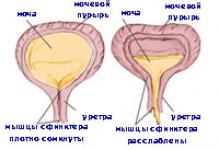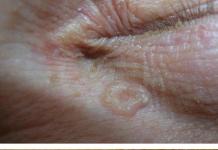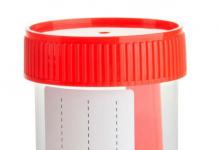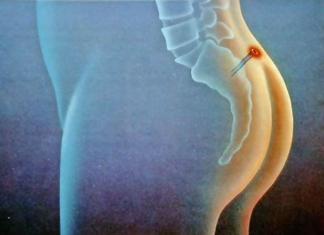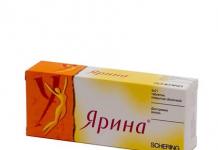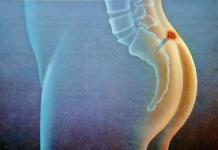The site provides reference information for informational purposes only. Diagnosis and treatment of diseases must be carried out under the supervision of a specialist. All drugs have contraindications. Consultation with a specialist is required!
The drug Enalapril
 Enalapril– an antihypertensive drug belonging to the class of ACE inhibitors. The action of Enalapril is due to its effect on the renin-angiotensin-aldosterone system, which plays an important role in the regulation of blood pressure.
Enalapril– an antihypertensive drug belonging to the class of ACE inhibitors. The action of Enalapril is due to its effect on the renin-angiotensin-aldosterone system, which plays an important role in the regulation of blood pressure. The visible effect of the medicine develops after taking it for 2-4 hours, and the initial effect occurs within an hour. The maximum pressure decreases after 4-5 hours. When Enalapril is taken in recommended doses, its hypotensive effect lasts for about a day.
The drug is quickly absorbed into the gastrointestinal tract with an absorption rate of about 60%. Enalapril is excreted primarily through the kidneys and intestines.
Release forms
Enalapril is available in tablets of 5, 10, 20 mg, packaged in blisters of 10 pieces. There are two or three blisters in a cardboard package.Dutch and English Renitek contains 14 tablets in one package.
Side effects when taking Enalapril are most often reversible. Therefore, if they appear, the drug should be stopped immediately.
Treatment with Enalapril
 How to take Enalapril?
How to take Enalapril?In accordance with the doctor's prescription, the drug is taken 1-2 times a day, regardless of meals. Combined Enalapril preparations containing diuretics are best taken in the morning. Treatment with the drug is long-term and, if well tolerated, throughout life.
As a result of simultaneous administration of Enalapril with lithium salts, the excretion of lithium may slow down, and its toxic effect increases. Therefore, prescribing these drugs together is not recommended.
Concomitant use of Enalapril with potassium-sparing diuretics can lead to potassium retention and hyperkalemia. Therefore, they can be taken at the same time only under the supervision of laboratory tests.
There is evidence that the simultaneous administration of insulin, as well as other hypoglycemic drugs and Enalapril can lead to hypokalemia. Most often this happens at the beginning of treatment in patients with renal pathology.
Enalapril weakens the effect of Theophylline.
It is safe to prescribe Enalapril with aspirin in a cardiac dosage, with beta-blockers and thrombolytics.
Enalapril's analogs
 To analogues (synonyms) of the drug containing Enalapril as the main active substance, relate:
To analogues (synonyms) of the drug containing Enalapril as the main active substance, relate: - Enap;
- Vazolapril;
- Invoril;
- Berlipril;
- Ednit;
- Enam;
- Bagopril;
- Miopril;
- Enarenal;
- Renitek;
- Envas;
- Corandil;
- Enalacor and others.
Analogues of Enalapril, which have a similar effect, but have a different chemical composition, are the drugs Captopril, Lisinopril, Ramipril, Zofenopril, Perindopril, Trandolapril, Quinapril, Fozinopril.
Enalapril is an antihypertensive drug that has hypotensive, cardioprotective, vasodilating and natriuretic effects. Instructions for use recommend taking tablets of 5 mg, 10 mg and 20 mg (including Hexal or Acri) for the treatment of various forms of arterial hypertension, including those in the absence of the required effect when taking other antihypertensive drugs. Reviews from patients and doctors explain at what pressure this drug helps.
Release form and composition
Enalapril is available in the form of round, white or white with a beige tint, cylindrical, biconvex tablets, with a score line on one side. Packaged in blisters of 10 and 20 pieces.
Pharmacological properties
Enalapril tablets are an angiotensin-converting enzyme inhibitor. Instructions for use (price, reviews, analogues will be discussed below in the article) indicate that the medicine helps reduce systolic and diastolic blood pressure, total peripheral vascular resistance, as well as the load on the myocardium.
A decrease in blood pressure within therapeutic limits does not affect cerebral circulation, since blood flow in the vessels of the brain can be maintained at required level and against the background of low blood pressure.
Long-term use of Enalapril significantly reduces left ventricular myocardial hypertrophy, preventing the development of chronic heart failure.
The drug also exhibits a mild diuretic effect. The use of the drug helps improve renal and coronary blood flow. The hypotensive effect of the drug appears 1 hour after taking it and continues for 24 hours.
What does Enalapril help with?
Indications for use of the drug include:
- left ventricular dysfunction;
- arterial hypertension;
- chronic heart failure (as part of combination therapy).
At what pressure is it prescribed?
- Treatment of essential hypertension (primary increase in blood pressure without pathological processes of the cardiovascular network), even if arterial pressure does not exceed 130/90 mm Hg. Art. Nutritional disorders of the brain and heart muscle are already observed. Any excess of the norm (120/80 mm Hg) is a direct indication for the use of Enalapril. The dosage and course of treatment are selected by the doctor based on the results of the study on the state of the cardiovascular system and the patient’s background diseases.
- Treatment of hypertension at any stage of the disease with blood pressure above 120/80 mmHg. Art. for normotensives, in the initial form of hypertension, it is prescribed, as well as in complicated and advanced cases in combination with other drugs. It is important to remember that not all drugs are combined with each other, complex treatment is carried out only under the joint supervision of a therapist and a cardiologist, which reduces the risk of complications. The dosage of Enalapril may vary throughout therapy and is selected individually under dynamic monitoring of the patient’s blood pressure and general condition.
- The minimum dosage of 1.25 ml of the drug is prescribed to people with a blood pressure of 120/80 mmHg. Art. subject to operating pressure 100/60 mm Hg. Art. (treatment of high blood pressure in hypotensive patients is carried out in short courses of 1–3 months if they feel unwell).
Instructions for use
Enalapril is taken orally, regardless of meals. The initial dosage for arterial hypertension is 5 mg/day. If the expected effect does not occur, you can increase the dose to 10 mg.
If the drug is well tolerated, it is permissible to increase the dose to 40 mg/day, divided into 1-2 doses. After 2-3 weeks, you can reduce the dose to a maintenance level of 10-40 mg/day. The recommended dosage for moderate hypertension is 10 mg/day.
The initial dose for renovascular hypertension is 2.5-5 mg/day. In case of severe arterial hypertension, it is permissible intravenous administration drug in a hospital setting.
The initial dosage for chronic heart failure is 2.5 mg. Subsequently, increase the dose every 3-4 days by 2.5-5 mg of Enalapril according to clinical response indications, but not more than 40 mg/day, with single or twice daily administration.
For asymptomatic dysfunction of the left ventricular myocardium, the recommended dosage is 5 mg/day, divided into two equal doses of 2.5 mg.
The maximum dose is 40 mg/day.
Contraindications

- porphyria;
- pregnancy;
- lactation period;
- increased sensitivity to ACE inhibitors, from which Enalapril tablets can cause side effects;
- age under 18 years (efficacy and safety have not been established);
- history of treatment-related angioedema ACE inhibitors.
Side effects
- headache;
- weakness;
- depression;
- anxiety;
- tides;
- increased fatigue;
- drowsiness (2-3%);
- dry mouth;
- excessive decrease in blood pressure;
- noise in ears;
- dizziness;
- insomnia;
- dyspnea;
- hives;
- skin rash;
- renal dysfunction;
- angioedema;
- orthostatic collapse;
- stomatitis;
- glossitis;
- interstitial pneumonitis;
- myocardial infarction (usually associated with a pronounced decrease in blood pressure);
- arrhythmias (atrial bradycardia or tachycardia, atrial fibrillation);
- anorexia;
- intestinal obstruction;
- unproductive dry cough;
- alopecia;
- chest pain;
- disorders of the vestibular apparatus;
- bronchospasm;
- confusion;
- angina pectoris;
- decreased libido;
- dyspeptic disorders (nausea, diarrhea or constipation, vomiting, abdominal pain);
- toxic epidermal necrolysis.
Children, pregnancy and breastfeeding
The drug is contraindicated during pregnancy and breastfeeding.
Enalapril is contraindicated in people under 18 years of age (due to the fact that the safety and effectiveness of the drug in childhood not installed).
special instructions
Caution must be exercised when prescribing Enalapril to patients with reduced blood volume (as a result of diuretic therapy, limiting salt intake, hemodialysis, diarrhea and vomiting) - the risk of a sudden and pronounced decrease in blood pressure is increased after using even the initial dose of an ACE inhibitor.
Transitional arterial hypotension is not a contraindication for continuing treatment with the drug after stabilization of blood pressure. In case of repeated pronounced decrease in blood pressure, the dose should be reduced or the drug discontinued.
The use of highly permeable dialysis membranes increases the risk of developing an anaphylactic reaction. Correction of the dosage regimen on days free from dialysis should be carried out depending on the level of blood pressure.
Drug interactions

Beta blockers, nitrates, slow blockers calcium channels, diuretics, prazosin, methyldopa and hydralazine enhance the hypotensive effect of Enalapril.
When prescribing the drug according to indications together with NSAIDs, the hypotensive effect of the former may be reduced. The drug reduces the effectiveness of drugs that contain theophylline.
Allopurinol, immunosuppressants and cytostatics increase hematotoxicity.
Analogues of the drug Enalapril
Analogues are distinguished by structure:
- Ednit.
- Enazil 10.
- Vero-Enalapril.
- Berlipril 5.
- Enap.
- Envipril.
- Invoril.
- Enafarm.
- Bagopril.
- Enalapril HEXAL.
- Enalapril-Agio.
- Renitek.
- Enalacor.
- Berlipril 10.
- Renipril.
- Enam.
- Vazolapril.
- Corandil.
- Enalapril-UBF.
- Enalapril maleate.
- Envas.
- Berlipril 20.
- Miopril.
- Enalapril-AKOS.
- Enalapril-FPO.
- Enarenal.
- Enalapril-Acri.
Vacation conditions and price
The average price of ENALAPRIL in pharmacies (Moscow) is 59 rubles. In Kyiv you can buy medicine for 10 hryvnia, in Kazakhstan - for 70 tenge. In Minsk, pharmacies offer tablets for 0.80-0.90 BYN. rubles Dispensed from pharmacies with a prescription.
Post Views: 2,430
Enalapril maleate (enalapril)
Composition and release form of the drug
Pills from white to white with a yellowish tint, round, biconvex.
Excipients: microcrystalline cellulose - 73 mg, pregelatinized corn starch - 30 mg, talc - 3 mg, colloidal silicon dioxide - 1 mg, magnesium stearate - 1 mg.
10 pieces. - contour cellular packaging (1) - cardboard packs.
10 pieces. - contour cellular packaging (2) - cardboard packs.
10 pieces. - contour cellular packaging (3) - cardboard packs.
10 pieces. - contour cellular packaging (5) - cardboard packs.
10 pieces. - contour cellular packaging (10) - cardboard packs.
pharmachologic effect
ACE inhibitor. It is a prodrug from which the active metabolite enalaprilat is formed in the body. It is believed that the mechanism of antihypertensive action is associated with competitive inhibition of ACE activity, which leads to a decrease in the rate of conversion of angiotensin I to angiotensin II (which has a pronounced vasoconstrictor effect and stimulates the secretion of aldosterone in the adrenal cortex).
As a result of a decrease in the concentration of angiotensin II, there is a secondary increase in renin activity due to the elimination of negative feedback on the release of renin and a direct decrease in aldosterone secretion. In addition, enalaprilat appears to have an effect on the kinin-kallikrein system, preventing the breakdown of bradykinin.
Thanks to its vasodilating effect, it reduces roundabout percentage (afterload), wedge pressure in the pulmonary capillaries (preload) and resistance in the pulmonary vessels; increases cardiac output and exercise tolerance.
In patients with chronic heart failure, long-term use of enalapril increases tolerance to physical activity and reduces the severity of heart failure (assessed by NYHA criteria). Enalapril in patients with mild and medium degree slows its progression, and also slows down the development of left ventricular dilatation. In case of left ventricular dysfunction, enalapril reduces the risk of major ischemic outcomes (including the incidence of myocardial infarction and the number of hospitalizations for unstable angina).
Pharmacokinetics
When taken orally, about 60% is absorbed from the gastrointestinal tract. Concomitant food intake does not affect absorption. Metabolized in the liver by hydrolysis with the formation of enalaprilat, due to the pharmacological activity of which a hypotensive effect is realized. The binding of enalaprilat to plasma proteins is 50-60%.
T1/2 of enalaprilat is 11 hours and increases with renal failure. After oral administration, 60% of the dose is excreted by the kidneys (20% as enalapril, 40% as enalaprilat), 33% is excreted through the intestines (6% as enalapril, 27% as enalaprilat). After intravenous administration of enalaprilat, 100% is excreted unchanged by the kidneys.
Indications
Arterial hypertension (including renovascular), chronic failure (as part of combination therapy).
Essential hypertension.
Chronic heart failure (as part of combination therapy).
Prevention of the development of clinically significant heart failure in patients with asymptomatic left ventricular dysfunction (as part of combination therapy).
Prevention of coronary ischemia in patients with left ventricular dysfunction in order to reduce the incidence of myocardial infarction and reduce the frequency of hospitalizations for unstable angina.
Contraindications
History of angioedema, bilateral renal artery stenosis or renal artery stenosis of a single kidney, hyperkalemia, porphyria, simultaneous use with aliskiren in patients with diabetes mellitus or renal impairment (KR<60 мл/мин), беременность, период лактации (грудного вскармливания), детский и подростковый возраст до 18 лет, повышенная чувствительность к эналаприлу и другим ингибиторам АПФ.
Dosage
When taken orally, the initial dose is 2.5-5 mg 1 time / day. The average dose is 10-20 mg/day in 2 divided doses.
Maximum daily dose when taken orally it is 80 mg.
Side effects
From the outside nervous system: dizziness, headache, feeling tired, increased fatigue; very rarely when used in high doses - sleep disorders, nervousness, depression, imbalance, paresthesia, tinnitus.
From the outside of cardio-vascular system: orthostatic hypotension, fainting, palpitations, pain in the heart area; very rarely when used in high doses - hot flashes.
From the digestive system: nausea; rarely - dry mouth, abdominal pain, vomiting, diarrhea, constipation, impaired liver function, increased activity of liver transaminases, increased concentration of bilirubin in the blood, hepatitis, pancreatitis; very rarely when used in high doses - glossitis.
From the hematopoietic system: rarely - neutropenia; in patients with autoimmune diseases - agranulocytosis.
From the urinary system: rarely - renal dysfunction, proteinuria.
From the respiratory system: dry cough.
From the reproductive system: very rarely, when used in high doses - impotence.
Dermatological reactions: very rarely when used in high doses - hair loss.
Allergic reactions: rarely - skin rash, Quincke's edema.
Others: rarely - hyperkalemia, muscle cramps.
Drug interactions
When used simultaneously with cytostatics, the risk of developing leukopenia increases.
With the simultaneous use of potassium-sparing diuretics (including spironolactone, triamterene, amiloride), potassium supplements, salt substitutes and dietary supplements containing potassium, hyperkalemia may develop (especially in patients with impaired renal function), because ACE inhibitors reduce the content of aldosterone, which leads to potassium retention in the body while limiting the excretion of potassium or its additional intake into the body.
With the simultaneous use of opioids and anesthetics, the antihypertensive effect of enalapril is enhanced.
With the simultaneous use of loop diuretics and thiazide diuretics, the antihypertensive effect is enhanced. There is a risk of developing hypokalemia. Increased risk of renal dysfunction.
When used simultaneously with azathioprine, anemia may develop, which is due to inhibition of erythropoietin activity under the influence of ACE inhibitors and azathioprine.
A case of the development of an anaphylactic reaction and myocardial infarction with the use of allopurinol in a patient receiving enalapril is described.
In high doses, it may reduce the antihypertensive effect of enalapril.
It has not been conclusively established whether acetylsalicylic acid reduces the therapeutic effectiveness of ACE inhibitors in patients with coronary artery disease and heart failure. The nature of this interaction depends on the course of the disease.
Acetylsalicylic acid, by inhibiting COX and prostaglandin synthesis, can cause vasoconstriction, which leads to a decrease in cardiac output and worsening of the condition of patients with heart failure receiving ACE inhibitors.
With the simultaneous use of beta-blockers, methyldopa, nitrates, hydralazine, prazosin, the antihypertensive effect may be enhanced.
When used simultaneously with NSAIDs (including indomethacin), the antihypertensive effect of enalapril is reduced, apparently due to inhibition of the synthesis of prostaglandins under the influence of NSAIDs (which are believed to play a role in the development of the hypotensive effect of ACE inhibitors). The risk of developing renal dysfunction increases; hyperkalemia is rarely observed.
With the simultaneous use of insulin and hypoglycemic agents, sulfonylurea derivatives, hypoglycemia may develop.
With simultaneous use of ACE inhibitors and interleukin-3, there is a risk of developing arterial hypotension.
When used concomitantly, there are reports of the development of syncope.
When used simultaneously with clomipramine, increased effects of clomipramine and the development of toxic effects are reported.
When used simultaneously with co-trimoxazole, cases of hyperkalemia have been described.
When used simultaneously with lithium carbonate, the concentration of lithium in the blood serum increases, which is accompanied by symptoms of lithium intoxication.
When used simultaneously with orlistat, the antihypertensive effect of enalapril is reduced, which can lead to a significant increase in blood pressure and the development of a hypertensive crisis.
It is believed that when used simultaneously with procainamide, there may be an increased risk of developing leukopenia.
When used simultaneously with enalapril, the effect of drugs containing theophylline is reduced.
There are reports of the development of acute renal failure in patients after kidney transplantation when used simultaneously with cyclosporine.
When used simultaneously with cimetidine, the half-life of enalapril increases and its concentration in the blood plasma increases.
It is believed that the effectiveness of antihypertensive drugs may be reduced when used simultaneously with erythropoietins.
When used simultaneously with ethanol, the risk of developing arterial hypotension increases.
special instructions
Use with extreme caution in patients with autoimmune diseases, diabetes mellitus, liver dysfunction, severe aortic stenosis, subaortic muscular stenosis of unknown origin, hypertrophic cardiomyopathy, and loss of fluid and salts. In the case of previous treatment with saluretics, in particular in patients with chronic heart failure, the risk of developing orthostatic hypotension increases, therefore, before starting treatment with enalapril, it is necessary to compensate for the loss of fluid and salts.
With long-term treatment with enalapril, it is necessary to periodically monitor the peripheral blood picture. Sudden cessation of enalapril does not cause a sharp increase in blood pressure.
During surgical interventions during treatment with enalapril, arterial hypotension may develop, which should be corrected by administering a sufficient amount of fluid.
Before studying the function of the parathyroid glands, enalapril should be discontinued.
Impact on the ability to drive vehicles and machinery
Caution is required when driving vehicles or performing other work that requires increased attention, because Dizziness may occur, especially after taking the initial dose of enalapril.
Pregnancy and lactation
Contraindicated for use during pregnancy. If pregnancy occurs, enalapril should be stopped immediately.
Enalapril is excreted in breast milk. If it is necessary to use it during lactation, the issue of stopping breastfeeding should be decided.
Use in childhood
The safety and effectiveness of enalapril in children have not been established.
For liver dysfunction
Use with extreme caution in patients with impaired liver function.
Antihypertensives - angiotensin-converting enzyme inhibitors.
Composition of Enalapril
Enalapril.
Manufacturers
Hexal AG (Germany), Salutas Pharma GmbH (Germany)
pharmachologic effect
Hypotensive, cardioprotective.
It undergoes biotransformation in the liver with the formation of an active metabolite - enalaprilat.
Enalaprilat easily passes through histohematic barriers, excluding the BBB, and penetrates the placenta.
Excreted mainly by the kidneys.
A decrease in blood pressure appears 1 hour after administration, reaches a maximum at 6 hours and continues for 1 day.
In some patients, therapy for several weeks is necessary to achieve optimal blood pressure levels.
In case of heart failure, long-term (for 6 months) treatment increases exercise tolerance, helps to reduce heart size, and reduces mortality.
The hypotensive effect of enalapril is due to a decrease in the blood levels of angiotensin II and aldosterone, and an increase in the concentration of bradykinin and PGE2.
A decrease in total peripheral vascular resistance is accompanied by an increase in cardiac output without changing the heart rate, a decrease in pressure in the pulmonary capillaries and unloading of the pulmonary circulation, which results in an increase in exercise tolerance and a decrease in the size of a dilated heart.
Side effects of Enalapril
Central nervous system depression, depression, ataxia, convulsions, drowsiness or insomnia, peripheral neuropathy, disturbances of vision, taste, smell, ringing in the ears, conjunctivitis, lacrimation, hypotension, myocardial infarction, acute cerebrovascular accident (as a result of hypotension), cardiac arrhythmia ( atrial tachy- or bradycardia, atrial fibrillation), orthostatic hypotension, angina attack, thromboembolism of the branches of the pulmonary artery, bronchospasm, dyspnea, nonproductive cough, interstitial pneumonitis, bronchitis and other upper respiratory tract infections, rhinorrhea, stomatitis, xerostomia, glossitis, anorexia, dyspepsia, melena, constipation, pancreatitis, liver dysfunction ( cholestatic hepatitis hepatocellular necrosis), kidney dysfunction, oliguria, urinary tract infections, gynecomastia, impotence, neutropenia, thrombocytopenia, exfoliative dermatitis, toxic epidermal necrolysis, pemphigus, enclosure of lies, alopecia, photodermatitis, allergic reactions (Syndrome of the State Sona, urticaria, Quincke's edema , anaphylactic shock, etc.).
Indications for use
Hypertension, symptomatic arterial hypertension, heart failure, diabetic nephropathy, secondary hyperaldosteronism, Raynaud's disease, scleroderma, complex therapy of myocardial infarction, angina pectoris, chronic renal failure.
Contraindications Enalapril
Hypersensitivity, pregnancy, breastfeeding, childhood.
Directions for use and dosage
The initial dose is 5 mg 1 time per day, and in patients with kidney pathology or taking diuretics - 2.5 mg 1 time per day.
If well tolerated and necessary, the dose can be increased to 10-40 mg per day once or in two doses.
Overdose
Symptoms:
- hypotension,
- development of myocardial infarction,
- acute cerebrovascular accident and thromboembolic complications against the background of a sharp decrease in blood pressure.
Treatment:
- intravenous administration of isotonic sodium chloride solution and symptomatic therapy.
Interaction
The simultaneous administration of other antihypertensive drugs, barbiturates, lithium preparations, tricyclic antidepressants, thiazine derivatives or alcohol intake leads to a sharp decrease in blood pressure.
Analgesics and non-steroidal anti-inflammatory drugs reduce the effect of the drug.
Simultaneous treatment with cytostatics, immunosuppressants and corticosteroids leads to leukopenia.
When taking potassium-sparing diuretics and/or potassium supplements simultaneously, hyperkalemia is possible, and drugs containing theophylline may reduce their effect.
special instructions
Caution must be exercised when prescribing the drug to patients on a low-salt or salt-free diet.
Before and during treatment, monitoring of blood pressure, renal function, the concentration of transaminases and alkaline phosphatase in the vascular bed is necessary (if their levels increase, treatment is canceled).
The drug is prescribed with caution in case of impaired renal function (dose selection should be carried out under the control of enalapril in the blood).
Storage conditions
List B.
Store in a dry place, protected from light, at room temperature, but not higher than 25 degrees. WITH.
Description
Tablets are white with a yellowish tint, flat-cylindrical, with a bevel.
Compound
One tablet contains: active substance– enalapril maleate – 5 mg or 10 mg; Excipients: lactose monohydrate, starch 1500 (partially pregelatinized corn starch), corn starch, sodium bicarbonate, magnesium stearate.
Pharmacotherapeutic group
Drugs affecting the renin-angiotensin system. Angiotensin-converting enzyme inhibitor.
ATX code: C09AA02.
Pharmacological properties
Pharmacodynamics
Enalapril maleate is a salt of maleic acid and enalapril. After absorption, enalapril undergoes hydrolysis to enalaprilat, which inhibits ACE, which leads to a decrease in the plasma concentration of the pressor compound angiotensin II and, as a consequence, to an increase in plasma renin activity and a decrease in aldosterone secretion. The drug can also block the breakdown of bradykinin, a powerful vasodepressor (vasodilator) peptide.
Although the mechanism by which enalapril exerts its hypotensive effect is primarily through suppression of the renin-angiotensin-aldosterone system, which plays the most important role in the regulation of blood pressure, the drug also has a hypotensive effect in patients with low renin levels. Taking enalapril in patients with hypertension leads to a decrease in blood pressure (BP) both in the supine and standing positions, without increasing heart rate.
Symptomatic postural hypotension is rare. In some patients, achieving an optimal level of blood pressure reduction may require several weeks of therapy. Abrupt withdrawal of enalapril is not accompanied by a rapid increase in blood pressure.
Effective suppression of ACE activity usually develops within 2–4 hours after oral administration of an individual dose of enalapril. The onset of antihypertensive activity is usually observed within an hour, with the maximum reduction in blood pressure achieved within 4–6 hours after administration. The duration of action depends on the dose - in recommended quantities, the antihypertensive and hemodynamic effects of the drug persist for at least 24 hours.
In hemodynamic studies in patients with arterial hypertension the decrease in blood pressure was accompanied by a decrease in peripheral arterial resistance with an increase in cardiac output and little or no change in heart rate. After administration of enalapril, there was an increase in renal blood flow; speed glomerular filtration did not change; There were no signs of sodium or water retention. However, in patients with reduced glomerular filtration, an increase in this indicator was observed.
When used together with thiazide-type diuretics, the hypotensive effect is additive. In this case, enalapril can reduce or prevent the development of hypokalemia caused by taking thiazides.
In patients with heart failure during therapy with digitalis and diuretics, enalapril reduces peripheral resistance and blood pressure.
Cardiac output increases while heart rate (usually elevated in patients with heart failure) decreases; pulmonary capillary wedge pressure (PCP) decreases. Enalapril therapy normalizes the condition of heart failure and improves exercise tolerance. These effects persist throughout therapy. In patients with mild or moderate heart failure, the drug slows the progression of cardiac dilatation and heart failure (decrease in left ventricular end-diastolic and systolic volumes and improvement in ejection fraction).
In patients with left ventricular dysfunction, enalapril reduces the risk of major cardiovascular events, myocardial infarction, and the number of hospitalizations for unstable angina.
Pharmacokinetics
Suction. Enalapril is rapidly absorbed from the gastrointestinal tract; the maximum concentration in the blood serum is achieved within one hour. The degree of absorption is about 60%, while food intake does not affect absorption. After absorption, enalapril is quickly and completely hydrolyzed to enalaprilat, an active ACE inhibitor. The peak concentration of enalaprilat in the blood serum is observed 4 hours after oral administration of enalapril. The effective half-life for enalaprilat accumulation after repeated doses of enalapril is 11 hours. In patients with normal renal function, stable serum concentrations of enalaprilat are achieved four days after the start of treatment.
Distribution. In the range of therapeutically significant concentrations, the binding of enalaprilat to serum proteins is 60%.
Metabolism. With the exception of conversion to enalaprilat, there is no data on further significant metabolism of enalapril.
Excretion. Enalaprilat is excreted mainly by the kidneys. The main components in the urine are enalaprilat, which accounts for 40% of the dose, and unchanged enalapril (about 20%).
Renal dysfunction. The effect of enalapril and enalaprilat in patients with renal failure intensifies. In patients with mild or moderate renal impairment (creatinine clearance 40–60 ml/min), after dosing 5 mg of the drug once daily, the AUC value of enalaprilat is approximately twice as high as in patients with normal renal function; whereas in severe renal failure (creatinine clearance ≤ 30 ml/min), the AUC value increases approximately eightfold; The effective half-life of enalaprilat is prolonged, and the time to reach a stable state increases.
Enalaprilat can be removed from the circulatory system using hemodialysis. The dialysis clearance of enalaprilat is 62 ml/min.
Liver failure. In patients with impaired liver function, the elimination period of enalaprilat may be prolonged. In patients with severe hepatic impairment, the hydrolysis of enalapril to enalaprilat may be delayed and/or impaired.
Congestive heart failure. In patients with congestive heart failure, the half-life of enalapril may be prolonged and the elimination of enalaprilat may be delayed.
Indications for use
Arterial hypertension of various forms and severity (including renovascular hypertension);
- heart failure stages I–III as part of complex therapy, including asymptomatic left ventricular dysfunction;
- prevention of coronary ischemia in patients with left ventricular dysfunction.
Directions for use and doses
Inside, regardless of food intake.
Arterial hypertension
The initial dose for mild arterial hypertension (AH) is 5 mg once a day. For other degrees of hypertension, the initial dose is 10 mg once a day. If there is no effect, the dosage of the drug is increased by 5 mg at intervals of 1 week. Maintenance dose – 20 mg 1 time per day. The dose should not exceed 40 mg per day.
Renovascular hypertension
Therapy is started with a lower initial dose of 2.5 mg. The dose is selected according to the patient's needs. The maximum daily dose is 40 mg of enalapril taken daily.
Concomitant treatment of arterial hypertension with diuretics
After the first dose of enalapril, arterial hypotension may develop. The drug is recommended to be prescribed with caution. Treatment with diuretics should be discontinued 2–3 days before starting treatment with enalapril. If possible, the initial dose of enalapril should be reduced (to 5 mg or less) to determine the initial effect of the drug.
Dosage for renal failure
The interval between doses of enalapril should be increased and/or the dose reduced.
Heart failure/asymptomatic left ventricular dysfunction
The initial dose of enalapril in patients with chronic heart failure is 2.5 mg per day; the drug should be prescribed under close medical supervision to establish the initial effect of the drug. Enalapril can be used in conjunction with diuretics and, when necessary, with cardiac glycosides. The dose should be increased at intervals of 1 week by 5 mg to the usual maintenance daily dose of 20 mg, which is prescribed once or divided into two doses depending on the patient’s tolerability of the drug. Dose selection should be carried out over 2–4 weeks.
Recommended dosage titration of enalapril in patients with heart failure/asymptomatic left ventricular dysfunction
The development of arterial hypotension after taking the first dose of enalapril does not indicate the need to stop taking the drug.
Use in elderly patients
The dose should be appropriate to the degree of renal impairment of the patient.
Use in pediatrics
Experience with the use of enalapril in children with arterial hypertension in clinical trials is limited. For children who can swallow tablets, the dose should be adjusted individually, depending on the patient's condition and the degree of reduction in blood pressure. The recommended starting dose is 2.5 mg for patients weighing 20 to< 50 кг и 5 мг для пациентов с массой тела >50 kg. Enalapril is taken once a day. The dose should be adjusted according to the patient's need until maximum dose 20 mg per day, if the patient’s body weight is from 20 kg to< 50 кг, и 40 мг – если масса тела >50 kg. Enalapril is not recommended for use in newborns and children with glomerular filtration rate< 30 мл/мин/1,73 м2, поскольку нет данных относительно применения у таких пациентов.
Side effect"type="checkbox">
Side effect
Adverse reactions are listed according to the classification of undesirable side effects in accordance with the damage to organs and organ systems and the frequency of development: very common (≥ 1/10), frequent (≥ 1/100 to< 1/10), нечастые (≥ 1/1000 до < 1/100), редкие (≥ 1/10000 до < 1/1000), очень редкие (< 1/10000), частота не известна (не могут быть оценены по доступным данным).
The frequency of side effects is listed by individual organ system.
Blood and lymphatic system disorders: uncommon – anemia (including aplastic and hemolytic); rare - neutropenia, hypohemoglobinemia, decreased hematocrit, thrombocytopenia, agranulocytosis, bone marrow suppression, pancytopenia, lymphadenopathy, autoimmune diseases.
Endocrine system disorders: frequency not known – syndrome of inappropriate antidiuretic hormone secretion (SIADH).
Metabolic and nutritional disorders: uncommon – hypoglycemia.
Nervous system disorders and mental disorders:
frequent – headache, depression; uncommon – confusion, insomnia, nervousness, paresthesia, dizziness; rare – abnormal dreams, sleep disturbances.
Visual disorders: very common – blurred vision.
Cardiovascular system disorders: very common – dizziness; common – hypotension (including orthostatic hypotension), syncope, chest pain, arrhythmias, angina pectoris, tachycardia; Uncommon – orthostatic hypotension, palpitations, myocardial infarction or cerebrovascular complications*, possibly secondary to excessive hypotension in high-risk patients; rare – Raynaud's phenomenon.
Disorders of the respiratory system and organs chest and mediastinum: very common – cough, common – dyspnea (shortness of breath), uncommon – rhinorrhea, pharyngitis, hoarseness, bronchospasm/asthma; rare – pulmonary infiltrates, rhinitis, allergic alveolitis/eosinophilic pneumonia.
Gastrointestinal disorders: very common – nausea; frequent – diarrhea, abdominal pain, change in taste; Uncommon – intestinal obstruction, pancreatitis, vomiting, dyspepsia, constipation, anorexia, stomach irritation, dry mouth, stomach ulcers and duodenum; rare – stomatitis/aphthous ulceration, glossitis; very rare – angioedema of the intestine.
Disorders of the liver and biliary tract: rare - liver failure, hepatocellular or cholestatic hepatitis, including hepatic necrosis, cholestasis, jaundice.
Disorders of the skin and subcutaneous tissues: common - rash, hypersensitivity/angioedema: reports of angioedema of the face, extremities, lips, tongue, glottis and/or larynx have been received; uncommon – increased sweating, itching, urticaria, alopecia; rare - exudative erythema multiforme, Stevens-Johnson syndrome, exfoliative dermatitis, toxic epidermal necrolysis, pemphigus, erythroderma.
Renal and urinary tract disorders: uncommon – renal dysfunction, renal failure, proteinuria; rare – oliguria.
Reproductive system and breast disorders: infrequent – impotence; rare – gynecomastia.
General complications and reactions at the injection site: very common – asthenia; frequent – fatigue; uncommon – muscle cramps, hyperemia, ringing in the ears, malaise, fever.
Changes in laboratory parameters: common – hyperkalemia, hypercreatininemia; uncommon – increased serum urea, hyponatremia; rare – increased liver enzymes, increased serum bilirubin.
A complex of symptoms has been reported: fever, serositis, vasculitis, myalgia/myositis, arthralgia/arthritis, positive ANF, increased ESR, eosinophilia and leukocytosis. Photosensitivity or other dermatological reactions are also possible.
If severe side effects occur, treatment should be discontinued.
Contraindications
Hypersensitivity to enalapril and other ACE inhibitors, a history of angioedema, porphyria, pregnancy, lactation.
Use with caution in case of primary hyperaldosteronism, bilateral renal artery stenosis, stenosis of the artery of a single kidney, hyperkalemia, condition after kidney transplantation; aortic stenosis, mitral stenosis (with hemodynamic disturbances), idiopathic hypertrophic subaortic stenosis, systemic diseases connective tissue, coronary heart disease, cerebrovascular diseases, diabetes mellitus, renal failure (proteinuria more than 1 g/day), liver failure, in patients on a salt-restricted diet or on hemodialysis, when taken simultaneously with immunosuppressants and saluretics, in elderly people (over 65 years of age).
The simultaneous use of angiotensin-converting enzyme inhibitors or ATII receptor blockers with aliskiren in patients with diabetes mellitus or moderate/severe renal failure (GFR less than 60 ml/min/1.73 m2) is contraindicated.
Overdose
Symptoms: a pronounced decrease in blood pressure up to the development of collapse, myocardial infarction, acute cerebrovascular accident or thromboembolic complications, convulsions, stupor.
Treatment: Place the patient in a horizontal position with legs elevated. Gastric lavage with further administration of activated carbon. In a hospital setting, measures are taken to stabilize blood pressure: intravenous administration of saline or plasma substitutes. Hemodialysis is possible.
special instructions(precautionary measures)" type="checkbox">
Special instructions (precautions)
Symptomatic hypotension
In uncomplicated hypertension, symptomatic hypotension is rare. Most likely to occur in patients with arterial hypertension due to hypovolemia, for example, due to diuretic treatment, salt-depleted diet, dialysis, diarrhea or vomiting. Symptomatic hypotension may also occur in patients with heart failure with or without concomitant renal failure. More likely to occur in patients with more severe heart failure caused by high-dose loop diuretics, hyponatremia, or kidney damage. In such patients, treatment should be started under medical supervision, with strict adherence to the selected doses of enalapril and/or diuretic. A similar principle can be applied in patients with coronary disease heart or cerebrovascular diseases in which a sharp decline High blood pressure can lead to myocardial infarction or stroke. If hypotension develops, the patient should be placed in the supine position and, if necessary, an intravenous infusion of 0.9% sodium chloride solution should be prescribed to replenish plasma volume. Transient hypotension is not a contraindication for treatment with enalapril. After adjustment of blood pressure and plasma volume, patients generally tolerate treatment well at follow-up.
In some patients with heart failure with normal or low blood pressure, enalapril may cause an additional decrease in blood pressure. This effect is predictable and is usually not a reason to discontinue treatment. If hypotension becomes symptomatic, a dose reduction and/or discontinuation of the diuretic and/or enalapril is required.
Aortic stenosis or mitral valve heart/hypertrophic cardiomyopathy
As with all vasodilators, ACE inhibitors should be prescribed with extreme caution in patients with left ventricular outflow tract obstruction. In cases of cardiogenic shock and severe hemodynamic obstruction of the left ventricular outflow tract, the use of these drugs should be avoided.
Renal dysfunction
In patients with impaired renal function (creatinine clearance< 80 мл/мин) начальную дозу следует подбирать с учетом клиренса креатинина. Поддерживающие дозы назначают в соответствии с реакцией пациента на лечение. При этом регулярно следует контролировать уровни креатинина и калия в сыворотке крови.
In patients with severe heart failure or underlying kidney disease, including renal artery stenosis, renal failure may occur during treatment with enalapril. With timely diagnosis and appropriate treatment, this disease is usually reversible.
In some patients without previously established kidney disease, simultaneous administration enalapril with a diuretic, slight and transient increases in serum urea and creatinine levels developed. In such cases, it may be necessary to reduce the dosage of ACE inhibitors and/or discontinue diuretics. This situation should increase the likelihood of predisposing renal artery stenosis.
Renovascular hypertension
Patients with bilateral renal artery stenosis or arterial stenosis of one functioning kidney who are treated with ACE inhibitors are at increased risk of developing hypotension and renal failure. In this case, a decrease in renal function can be manifested only by minor changes in the level of creatinine in the blood serum. In such patients, treatment should begin with low doses and under medical supervision; During treatment, careful titration and monitoring of renal function are necessary.
Kidney transplant
Due to the lack of experience with its use, treatment with enalapril is not recommended for patients with a recent kidney transplant.
Liver failure
During treatment with ACE inhibitors, in rare cases, a syndrome may occur that begins with cholestatic jaundice and progresses to fulminant liver necrosis and (sometimes) death. The mechanism of this syndrome is unknown. If jaundice or a clear increase in liver enzymes occurs during treatment with ACE inhibitors, treatment should be stopped immediately and the patient should be carefully monitored and treated if necessary.
Neutropenia and agranulocytosis
Neutropenia, agranulocytosis, thrombocytopenia and anemia have been reported in patients receiving ACE inhibitors. Neutropenia rarely occurs in patients with normal renal function and no other complications. Enalapril should be prescribed with extreme caution to patients with collagen vascular disease (for example, systemic lupus erythematosus, scleroderma), as well as those on immunosuppressive drugs, allopurinol or procainamide, or a combination of these factors, especially with pre-existing renal impairment. Some of these patients may develop serious infections, in some cases not responding to intensive antibiotic therapy. If enalapril is used in such patients, periodic monitoring of the white blood cell count is recommended. Patients should be instructed to report any signs of infection.
Hypersensitivity and angioedema
During treatment with ACE inhibitors, including enalapril, in rare cases, angioedema of the face, extremities, lips, tongue, pharynx and/or larynx may develop at any stage of treatment. In such cases, the drug should be discontinued immediately. Appropriate monitoring should be carried out to ensure that all symptoms have disappeared before the patient is discharged from the hospital. Even in cases where only swelling of the tongue is involved, without respiratory failure, patients may require long-term observation, since therapy with antihistamines and corticosteroids may not be sufficient.
There are very rare cases of death due to angioedema associated with swelling of the larynx and tongue; in such patients with a history of airway surgery, airway obstruction is likely. In case of angioedema of the tongue, pharynx or larynx, which can cause airway obstruction, appropriate treatment should be started immediately, for example, subcutaneous administration of a solution of adrenaline 1:1000 (0.3 - 0.5 ml), and measures should be taken to ensure free airway patency.
There have been reports that black patients receiving ACE inhibitors have a higher incidence of angioedema.
Patients with a history of angioedema unrelated to treatment with ACE inhibitors are at increased risk of developing angioedema while taking ACE inhibitors.
Anaphylactoid reactions during desensitization
In patients taking ACE inhibitors, life-threatening anaphylactoid reactions may occur in rare cases during desensitization against wasp or bee venom. allergic type) reactions. These reactions can be avoided by temporarily stopping treatment with ACE inhibitors before each desensitization.
Anaphylactoid reactions during LDL apheresis
Patients receiving ACE inhibitors during low-density lipoprotein (LDL) apheresis with dextran sulfate may experience life-threatening anaphylactoid (allergic-type) reactions. These reactions can be avoided by temporarily stopping treatment with ACE inhibitors before each apheresis.
Patients undergoing hemodialysis treatment
There have been reports of hypersensitivity reactions and allergic-type reactions (anaphylactoid reactions) in patients undergoing dialysis using high-flux membranes (eg, AN 69) and concomitantly receiving treatment with ACE inhibitors. If hemodialysis is necessary, the patient should be switched to drugs of a different class, or a different type of membrane should be used for dialysis.
Hypoglycemia
In patients with diabetes mellitus who are being treated with oral antidiabetic agents or insulin, blood glucose levels should be carefully monitored during the first few months concomitant treatment ACE inhibitors.
Cough
During treatment with ACE inhibitors, a persistent, dry, non-productive cough may occur, which stops after treatment is discontinued. This should be included in the differential diagnosis.
Surgical interventions and anesthesia
In patients undergoing major surgery or during anesthesia with drugs that cause hypotension, enalapril may block the formation of angiotensin II secondary to compensatory renin release. Hypotension associated with this mechanism can be corrected by increasing blood volume.
Hyperkalemia
During treatment with ACE inhibitors, including enalapril, blood potassium levels may increase in some patients. Risk factors for hyperkalemia include renal failure, worsening renal function, age (> 70 years), diabetes, intercurrent illnesses, in particular dehydration, acute heart failure, metabolic acidosis and concomitant use of potassium-sparing diuretics (for example, spironolactone, eplerenone, triamterene or amiloride), potassium supplements or potassium-containing salt substitutes, or taking other drugs that can lead to increased levels serum potassium (eg, heparin). The use of potassium supplements, potassium-containing salt substitutes, or potassium-sparing diuretics may result in significant increases in serum potassium levels, especially in patients with impaired renal function.
Hyperkalemia can lead to serious, sometimes fatal arrhythmias. In cases where the simultaneous use of enalapril and the above mentioned drugs is considered appropriate, it is recommended to regularly monitor the level of potassium in the blood serum.
Use in children
There is very little information about the effectiveness and safety of the drug in children with arterial hypertension over the age of 6 years, and there is no experience of use for other indications. There is very little data on the pharmacokinetics of the drug in children over 2 months of age. Enalapril is recommended for use in children only for arterial hypertension.
Enalapril is not recommended for use in newborns and children with glomerular filtration rate< 30 мл/мин/1,73 м2, поскольку нет данных относительно применения у таких пациентов (см. раздел «Способ применения и дозы»).
Ethnic characteristics
As with other ACE inhibitors, the hypotensive effect of enalapril is less pronounced in black patients, which is associated with a genetically determined decrease in renin secretion.
Dual blockade of the renin-angiotensin-aldosterone system is associated with an increased risk of hypotension, hyperkalemia and renal dysfunction (including acute renal failure) compared with monotherapy. Dual blockade of the RAAS using an ACEI, ARB II, or Aliskiren cannot be recommended in any patient, especially in patients with diabetic nephropathy.
In some cases, when the combined use of ACE inhibitors and ARB II is absolutely indicated, careful supervision by a specialist and mandatory monitoring of renal function, water and electrolyte balance, and blood pressure are necessary. This applies to the use of candesartan or valsartan as adjunctive therapy to ACE inhibitors in patients with chronic heart failure. Carrying out double blockade of the RAAS under the careful supervision of a specialist and mandatory monitoring of renal function, water-electrolyte balance and blood pressure is possible in patients with chronic heart failure with intolerance to aldosterone antagonists (spironolactone), who have persistence of symptoms of chronic heart failure, despite other measures adequate therapy.
Special precautions regarding excipients
Enalapril contains lactose. Patients with rare hereditary disorders such as galactose intolerance, Lapp lactase deficiency and glucose-galactose malabsorption should not take this drug.
Interaction with other drugs
Potassium-sparing diuretics, potassium supplements
ACE inhibitors reduce diuretic-induced potassium loss.
Potassium-sparing diuretics (eg, spironolactone, triamterene, or amiloride), potassium supplements, or potassium-containing salt substitutes may cause hyperkalemia.
If concomitant use is indicated due to proven hypokalemia, use should be done with caution and with regular monitoring of serum potassium.
Diuretics (thiazide or loop diuretics)
Previous treatment with high doses of diuretics may lead to hypovolemia and the risk of developing hypotension. The hypotensive effect can be reduced by discontinuing diuretics, compensating for the lack of salts and fluid in the body, or taking low doses of enalapril at the initial stage of treatment.
Other antihypertensive drugs
Concomitant use of enalapril and other antihypertensive drugs may increase the antihypertensive effect of enalapril. Concomitant use with nitroglycerin, other nitrates or vasodilators can also lead to a decrease in blood pressure.
Lithium
A reversible increase in serum lithium concentrations and toxic effects have been reported when lithium is taken concomitantly with ACE inhibitors. Concomitant use of thiazide diuretics may increase lithium levels and increase the risk of lithium toxicity. Therefore, co-administration of enalapril and lithium is not recommended. If this combination is still necessary, then the level of lithium in the blood serum should be carefully monitored.
Tricyclic antidepressants/neuroleptics/anesthetics/ and narcotics
The simultaneous use of certain anesthetics, tricyclic antidepressants and antipsychotics with ACE inhibitors may lead to an additional decrease in blood pressure.
Nonsteroidal anti-inflammatory drugs medicines(NSAIDs)
Chronic use of NSAIDs may reduce the antihypertensive effect of ACE inhibitors. NSAIDs (including COX-2 inhibitors) and ACE inhibitors have an additive effect on increasing serum potassium levels, which may lead to deterioration of renal function. This effect is usually reversible. In rare cases, acute renal failure may occur, especially in patients with impaired renal function (for example, elderly patients or those with severe hypovolemia, including those taking diuretics). Patients should be adequately hydrated and attention should be paid to monitoring renal function upon initiation of concomitant therapy and periodically thereafter.
Gold preparations
There have been isolated reports of nitrite reactions (symptoms include facial flushing, nausea, vomiting and hypotension) in patients receiving injectable gold preparations (sodium aurothiomalate) and ACE inhibitors, including enalapril.
Antidiabetic drugs
Epidemiological studies suggest that the concomitant use of ACE inhibitors and antidiabetic drugs (insulin, oral antidiabetic drugs) may lead to a marked decrease in blood sugar levels with a risk of hypoglycemia. This phenomenon is most likely to occur in patients with kidney damage during the first weeks of combination treatment.
Alcohol
Alcohol enhances the hypotensive effect of ACE inhibitors.
Sympathomimetics
Sympathomimetics may reduce the antihypertensive effect of ACE inhibitors.
Acetylsalicylic acid, thrombolytics and β-blockers
Enalapril can be safely administered concomitantly with acetylsalicylic acid(in cardiac dosage), thrombolytics and β-blockers.
Cimetidine
Drugs containing cimetidine prolong the effect of enalapril.
Dual blockade of the renin-angiotensin-aldosterone system
Dual blockade of the renin-angiotensin-aldosterone system with angiotensin receptor blockers, ACE inhibitors, or aliskiren is associated with an increased risk of hypotension, syncope, hyperkalemia, and renal dysfunction (including acute renal failure) compared with the use of a single renin-angiotensin-aldosterone system agent. . Blood pressure, renal function, and electrolyte levels should be continuously monitored in patients taking enalapril and other drugs that affect the renin-angiotensin-aldosterone system. Patients suffering from diabetes are contraindicated to use aliskiren in combination with enalapril preparations. The combined use of aliskiren with enalapril drugs should also be avoided in patients with renal failure (glomerular filtration rate< 60 мл/мин).



